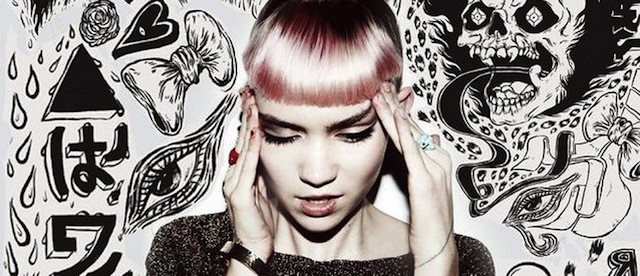In preparation for my impending MA thesis project, I've started to throw some ideas around about fashion and music, which are my two areas of academic and everyday interest. Fashion is unique in its power to facilitate the creation of distinct artistic identities. As a performer, I am acutely aware of the role that fashion plays in both the music industry and the art world. The term ‘performing artist’ is almost synonymous with the term ‘fashion icon;’ many musicians have their own fashion brands, while visual artists commercialize their work by partnering with major fashion enterprises. My upcoming research will further examine the process by which performing artists use fashion to develop a unique identity.
Some of my general research questions are: How do female artists of varying popularity create distinct musical identities through fashion? How do they comply with or resist the stereotypes of pop-stardom, gender/genre, bodily image, etc.? What are the factors in a performer's level of authenticity? How do performers carve out their own space within the music industry by combining the disciplines of fashion and art?
In particular, I am interested in artists whose work combines the disciplines of fashion, music, and visual/performance art. I would like to focus on a few interdisciplinary artists including Lady Gaga, Björk, and Grimes. These three artists each have a different approach to fashion and music within their separate musical genres.
Lady Gaga for Artpop, 2013
From what I understand, Haus of Gaga works as a think-tank for Lady Gaga’s costumes, sets, and music videos, which provide excellent material for visual analysis. In the last two years she has attempted to enter into the realm of performance art, with controversial results (Check back later for my thoughts on Artpop). Nevertheless, Lady Gaga is one of the most visible performers whose work consciously attempts to integrate the fields of fashion, music, and art.
Bjork for Biophilia, 2011
Björk is an idiosyncratic performer who has been known to collaborate with avant-garde designers and lyricists. In 2012 she worked with a team of artists, scientists, designers, instrument makers, and software developers to create the Björk: Biophelia App, which provides an interactive ‘galaxy’ experience that accompanies each of the songs on her album. Björk is an example of an artist whose work does not aim to be as visible as Gaga’s, but rather strives to create original soundscapes and intellectual messages that simultaneously combine fashion and art.
Grimes for Visions, 2012
Grimes has become more popular in the past year with recent performances at several popular music festivals like Coachella, Lollapalooza and this year, the Governor’s Ball. Grimes is a special case because she is an entirely self-made artist who got her start in the underground Vancouver music scene. She produces her own music with amazingly simple and effective techniques, and is more of a sound artist turned fashion icon than a pop star. This makes her an interesting case study because of the level of authenticity that surrounds her work (I suspect that a lot of questions surrounding authenticity will be at play in my research). An article in the 2013 September Issue of Vogue complimented her futuristic style, and cited Karl Lagerfeld as a big fan of her music - clearly, he has excellent taste.
Grimes keeps an active blog which she uses to promote her feminist views. She writes about the complexities of being a female composer and producer in an industry dominated by men, and defends herself against reviewers who focus on her “waif-like” appearance rather than her musical style. Her futuristic music videos feature unique ensembles by emerging designers, and her complex drawings possess fascinating elements of anime and cute culture.
I plan to use the technique of visual analysis to gather information from music videos and recorded performances, and to learn as much as I can about the designers that were chosen by each performer to create their specific look. I will draw on various bodies of literature to support my data, such as The Twentieth Century Performance Reader, which will give me insight to the act of performing fashion in the media. Fashion Futures, by Bradley Quinn addresses wearable technology and the creation a futuristic fashion look. I am currently reading Fashion and Music by Janice Miller, which addresses the cultural significance of the relationship between popular music and fashion. I think this text will provide a great introduction to thinking about the issues surrounding the relationship between fashion and music and will also introduce me to further sources that will be helpful in the future.



